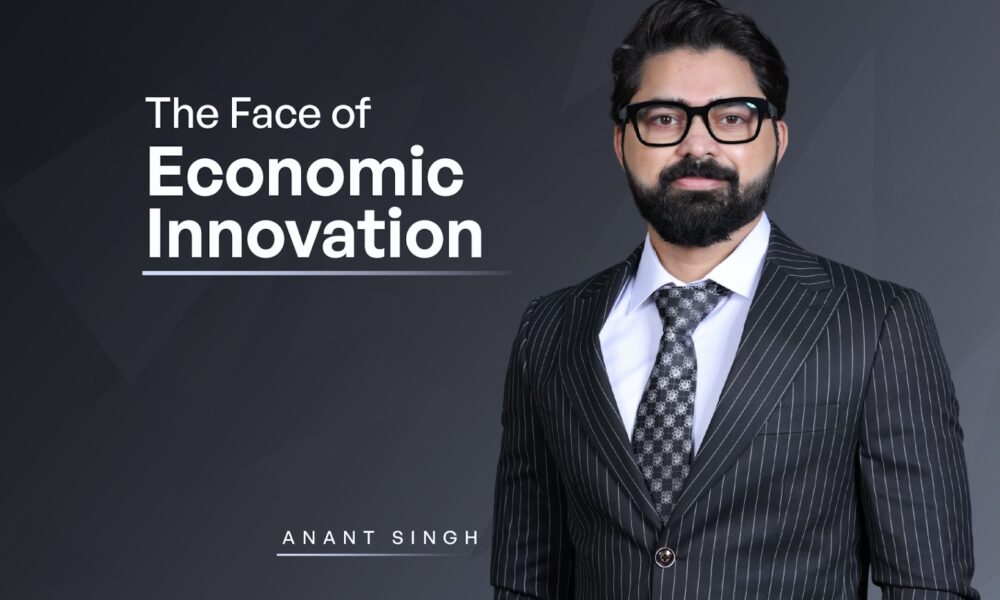Finance Must Lead; Not Follow: Anant Singh’s Vision on UAE’s Economic Future

The finance world, and specifically the dynamic economies of the UAE, is subject to ongoing change through technology, economic uncertainty, and shifting market forces. Under such an environment, the traditional finance function is transforming, and what is required is a new generation of leaders to navigate complexity and drive innovation. The UAE, as one of the largest Middle Eastern economies, is focusing on diversification and technology evolution. The country over the past few years has had a very robust argument to support this paradigm shift.
Among the most notable developments is the UAE’s commitment to becoming a leader in fintech and digital banking. Recent government initiatives have encouraged financial institutions to adopt innovative technologies that streamline services and enhance customer experience. The launch of the UAE’s digital currency and various regulatory reforms aimed at attracting fintech start-ups highlight the country’s push toward a future where technology and finance are intertwined.
“The financial landscape of Middle Eastern countries is at a pivotal moment,” declared Anant Singh, a veteran of global financial markets, during a recent discussion on the sector’s future. “The days of finance as a mere support function are over,” Singh said recently, pointing to the need for a more visionary and forward-looking function. “Finance today has to be an enabler of innovation and growth, especially in a market like the UAE, where digital transformation is taking place at a rapid rate.”
Greater usage of AI and digitalization is no longer an external trend but an internal transformation redefining the character of the world financial system. The mass availability of fintech platforms and seamless integration into traditional banking systems have transformed the provision of financial services. In the UAE, various fintech firms are emerging, providing tailored solutions that cater to local businesses and consumers alike, thereby enhancing competition and improving service delivery.
This transformation has placed a premium on leaders who recognize that the financial roles of today are outside the confines of the traditional. Possessing the ability to tap the potential of AI-driven analytics, implement blockchain-driven solutions, and manage the complexity of digital asset management is quickly becoming an imperative. Under these circumstances, the ability to envision technology disruption and integrate it into strategic financial planning is a requirement. Those possessing the awareness of the need to lead innovation, rather than merely operate within the existing financial frameworks, stand to lead the industry through this period of unprecedented change.
Anant Singh, in his analysis of the current financial climate, further emphasized, “Finance must lead innovation, not just follow trends. What I mean by this statement is that the key to navigating this new era lies with financial leaders who must be strategic visionaries. They must be able to anticipate market shifts, leverage technology, and build resilient financial frameworks.” This vision aligns with the UAE’s ambition to not only become a regional financial hub but also to set a benchmark for best practices globally.
He outlined key areas where financial leaders should focus: “We need to expand our global reach through strategic partnerships, integrate cutting-edge technologies like AI and blockchain, and build robust financial resilience. Innovation in investment strategies and a focus on sustainable growth are also paramount. Ultimately, we must create value for all stakeholders.” This statement underscores the importance of a holistic approach in finance, where environmental, social, and governance (ESG) factors intertwine with financial decision-making. The UAE’s regulatory bodies have also started to incorporate guidelines that encourage sustainable investments, further highlighting the need for financial institutions to align with global sustainability standards.
Singh’s career is the best example of this paradigm shift. From his early days on the trading floors, where he gained exposure to the trends in the global markets, to co-founding a brokerage house that was the first to launch AI-based trading solutions, Singh has been a trendsetter. His ability to foresee changes in the markets and adapt has earned him one of the most influential positions in finance, and his observations particularly appeal to the UAE’s aspirations. As the UAE continues to enhance its technology infrastructure, Singh’s expertise offers invaluable insights into how financial institutions can evolve in tandem.
As the UAE and the global financial community navigate this transformative era, the opinions of Anant Singh, seconded by analysts in the financial sector, are a valuable guide. His emphasis on innovation, technological integration, and leadership, and additionally, the most crucial abilities to integrate superior technologies, optimize capital, and pursue sustainable methods, emphasizes the central role of visionary specialists in building a strong and growing financial future.
The road ahead demands a collaborative effort between regulators, financial institutions, and technology companies to ensure that the UAE capitalizes on its strategic advantages. By fostering an environment that embraces innovation and encourages continuous learning, the UAE can solidify its position as a leader in the global economic landscape. The time is ripe for finance not only to respond to change but also to become the catalyst for it.
In conclusion, the message from Anant Singh serves as a clarion call for finance leaders in the UAE and beyond. They must take bold steps toward embracing innovation and leading with vision, as the financial world is at the threshold of a new epoch defined by technology-driven transformation.

Source: Finance Must Lead; Not Follow: Anant Singh’s Vision on UAE’s Economic Future



![best-crypto-presale-to-invest-in-april-2025-[top-trending-cryptos]-you-can’t-ignore!](https://savingssenseipro.com/wp-content/uploads/2025/04/5639-best-crypto-presale-to-invest-in-april-2025-top-trending-cryptos-you-cant-ignore-390x220.jpg)
